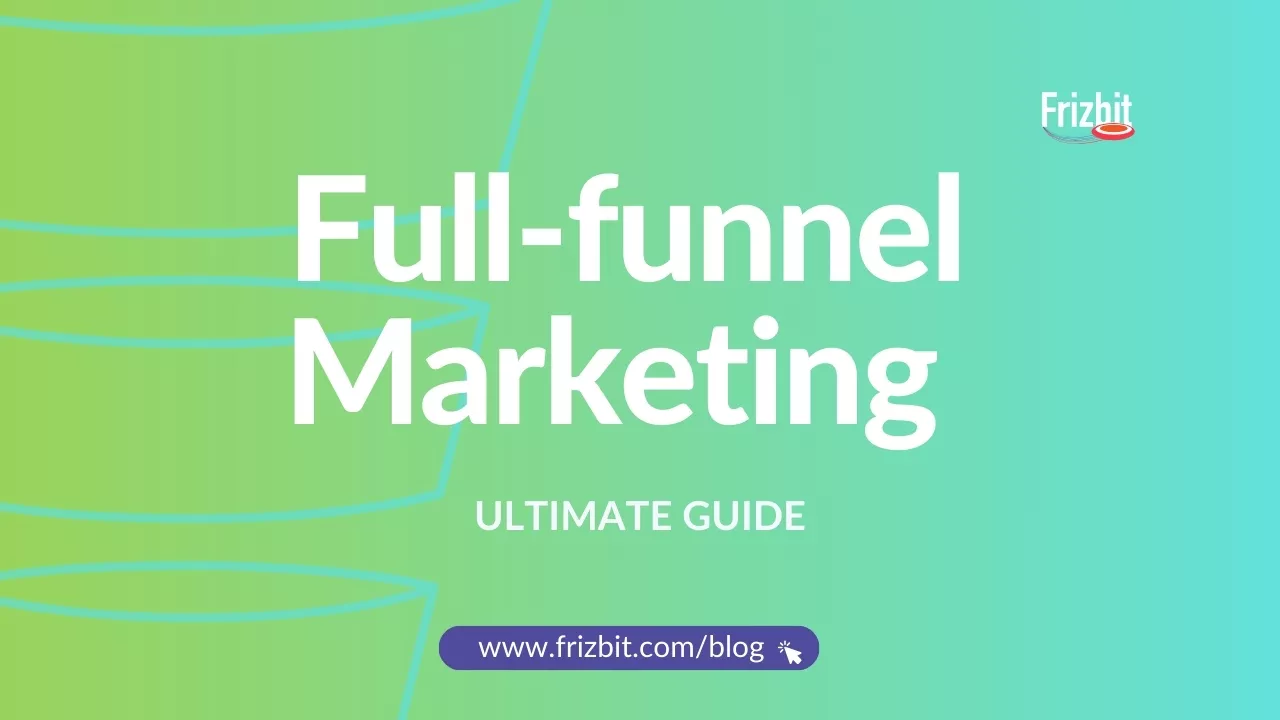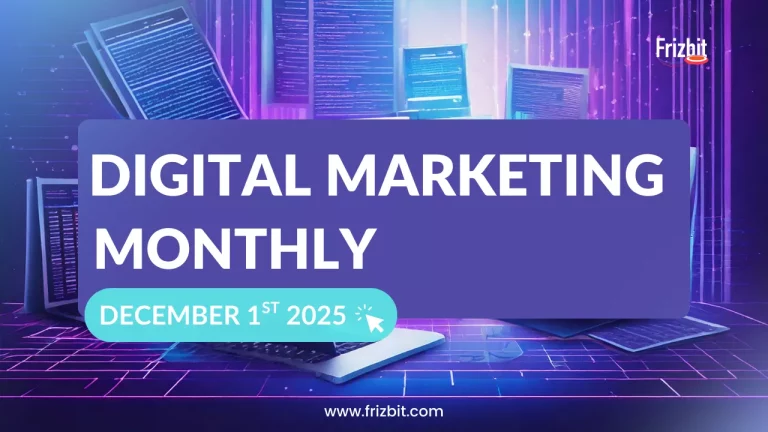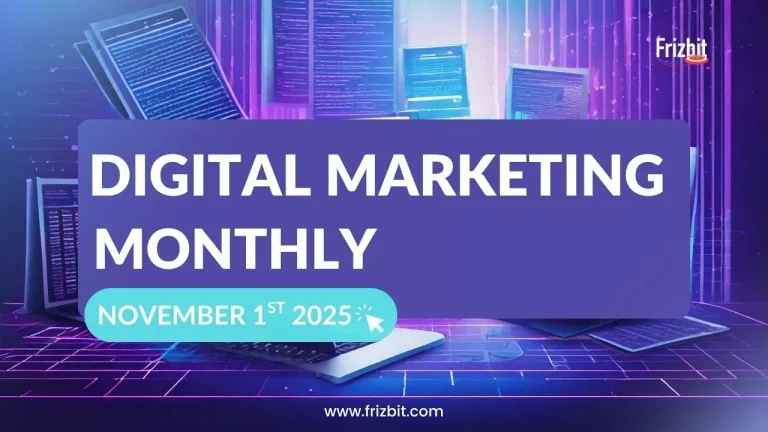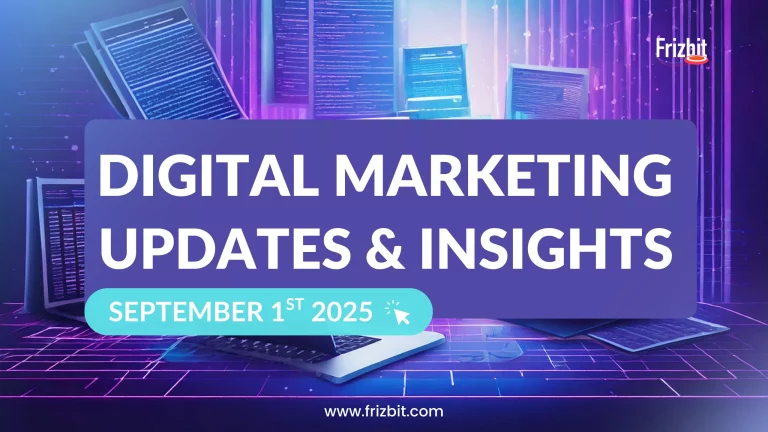
Full-funnel marketing is essential to address the fact that almost 96% of visitors who land on your website leave without making a purchase.
This might seem overwhelming, but the fact that these visitors showed up at all means there’s interest, and it’s up to you to nurture it! By applying a full-funnel marketing strategy, you can effectively guide potential customers through every stage of their journey.
This ultimate guide will explore the stages of a full-funnel approach, discuss why it is essential for businesses, insightful strategies, a step-by-step guide to create a full funnel marketing strategy, and more!
What is Full-Funnel Marketing?
Full-funnel marketing is a strategic approach that covers the entire customer journey, from the first interaction to post-purchase engagement. By delivering a seamless and consistent experience across all touchpoints, businesses can enhance engagement, drive higher conversion rates, improve customer retention, and ultimately achieve a higher return on investment.
Typically, the full-funnel is divided into three stages:
Top of the Funnel (TOFU) for Awareness & Discovery, Middle of the Funnel (MOFU) for Interest & Consideration, and Bottom of the Funnel (BOFU) for Decision & Purchase. The funnel narrows as people progress through these stages, with some dropping out at each step.
What is full-funnel modelling?
In contrast to lower-funnel attribution, which primarily focuses on the final touchpoint before conversion, full-funnel attribution takes into account all impressions and assists clicks throughout the entire customer journey.
It examines the entire path leading to conversion, rather than just the last interaction.
Why every business needs a full-funnel marketing strategy
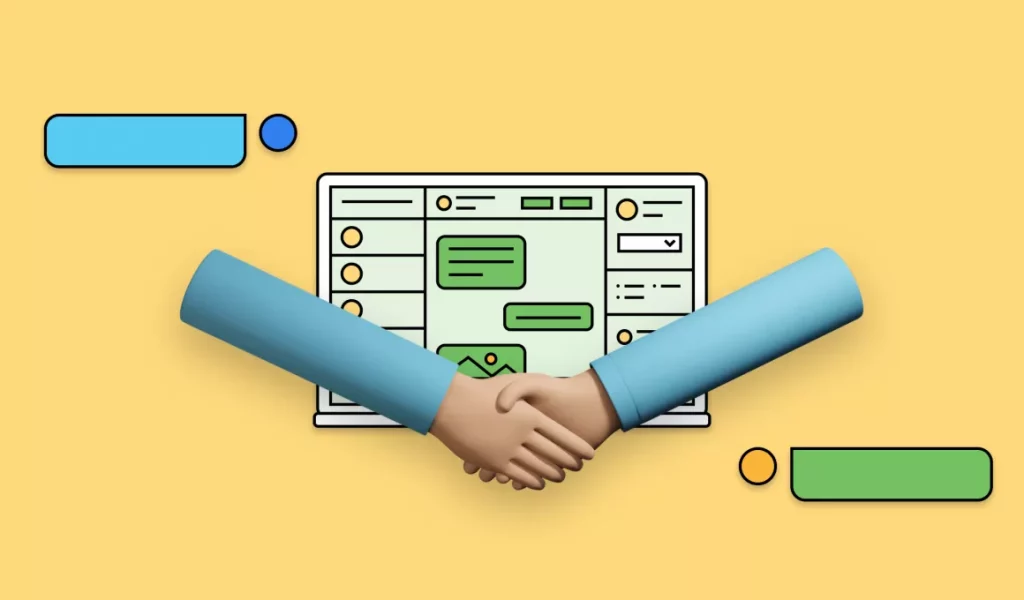
A full-funnel approach is essential because it allows businesses to:
- Nurture leads effectively, increasing the likelihood of conversion.
- Build stronger relationships with customers by providing relevant content at each stage.
- Optimise marketing efforts to ensure a higher return on investment (ROI).
- Adapt to changing customer behaviours and preferences in real-time.
By understanding and implementing full-funnel marketing, businesses can create a cohesive strategy that guides prospects through their journey.
What are the Stages of Full-Funnel Marketing?
1.Top of the Funnel (ToFu): Awareness and Discovery
The main goal at the top of the funnel is to increase brand visibility and attract potential customers. This stage is all about capturing the attention of a wide audience and making them aware of your product or service.
How to apply it
Write content that includes blog posts, social media posts, landing pages, infographics, and videos. Content should be educational and engaging to capture the interest of potential customers.
Once you have your content, share it through ads, social media platforms, cold emails, pop-ups, and your website’s home and blog pages to spread this content widely.
2.Middle of the Funnel (MoFu): Consideration Stage
In the middle of the funnel, the focus shifts to educating prospects and building trust. At this stage, potential customers are aware of your brand but are still considering their options. The goal is to provide a potential solution to their problem.
How to apply it
You have to create content that provides value and addresses specific pain points, such as case studies, webinars, podcasts, whitepapers, guides, ebooks, and FAQs.
To share your content you can use channels such as nurturing emails, push notifications, chat, and your website’s features page are effective to share this content.
This content should build trust and demonstrate your expertise, helping prospects to consider your products or services more seriously
3.Bottom of the Funnel (BoFu): Conversion Stage
The bottom of the funnel is where you aim to convert prospects into customers. At this critical stage, potential customers are ready to make a decision. The goal is to provide the final push needed to encourage them to purchase.
How to apply it
You have to create content that emphasises why your product or service is the best choice, such as competitive comparisons, post-purchase services, demos or free trials, testimonials, success stories, promotions, and discounts.
Once you have your content you can use direct channels like calls, SMS, emails, push notifications, and your website’s pricing page to provide the final nudge.
How do you create a full funnel marketing strategy: Step by Step
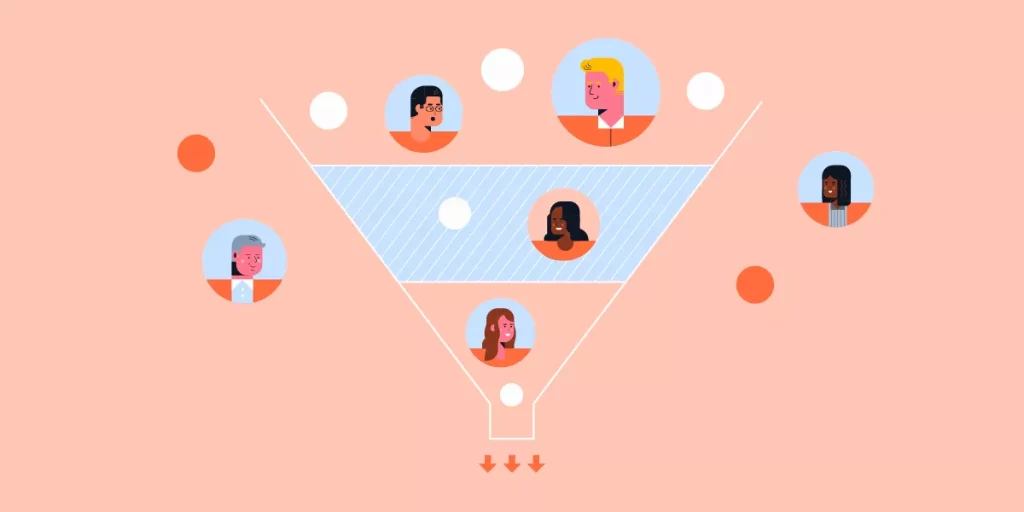
Step 1: Map Your Customer’s Journey
To map your customer’s journey, put yourself in their shoes! Identify who your customers are, their problems, how they find solutions, and how you can create content that guides them through this journey.
Mapping your customer’s journey means segmenting them into one of the full-funnel stages: Awareness, Consideration, and Decision.
Step 2: Choose Your Marketing Channel
Previously, we briefly highlighted these channels, and now we will cover them more deeply to ensure you understand how to effectively use each one at different stages of the funnel.
ToFu Channels (Top of Funnel): Awareness
- Blog Posts: Write informative and engaging articles to attract a broad audience.
- Social Media: Use platforms like Facebook, Twitter, WhatsApp and Instagram to reach and engage with potential customers.
- Videos: Produce educational or entertaining videos to increase brand awareness and engagement.
- Ads: Ads can be a good option to increase visibility, but be mindful of third-party cookie issues and ensure your ads comply with privacy regulations.
- Cold Emails: Send introductory emails to potential customers to generate interest.
- Pop-ups: Use website pop-ups to capture email addresses or offer incentives.
- Website Home & Blog: Optimise your homepage and blog to provide valuable content and capture leads.
MoFu Channels (Middle of Funnel): Consideration
- Automated Emails: Send a series of emails to educate and build a relationship with your leads. These could include informative emails, case studies, webinars, and guides.
- Web Push Notifications: Differentiate between informational push notifications and promotional ones to tailor the content to the user’s needs.
- Chat: Implement live chat or chatbots on your website to answer questions and provide support.
- Website Features Page: Highlight the key features and benefits of your product or service to help prospects evaluate their options.
BoFu Channels (Bottom of Funnel): Decision
- SMS: Direct texts to engage prospects and address their final questions or concerns.
- Emails: Cart abandonment emails are particularly resourceful at this stage, as they remind potential customers of items they left behind and encourage them to complete their purchase.
- Push Notifications: These should be more action-oriented to drive conversions.
- Website Pricing Page: Ensure your pricing page is clear, detailed, and highlights the value of your product or service.
By focusing on these channels, you can effectively guide your prospects through the funnel and convert them into loyal customers.
Step 3: Set Your KPIs
Key Performance Indicators (KPIs) are essential metrics that help you track the performance of your marketing efforts. Here’s how to set them:
- Traffic: Measure the number of visitors to your content. Traffic is a strong indicator of how well your marketing efforts are performing. Use tools like Google Analytics to track traffic patterns and identify growth.
- Keyword Rankings: Track where your content ranks for targeted keywords. Higher rankings generally lead to more traffic. Use tools like Semrush or Google Search Console to monitor your keyword positions.
- Conversion Rates: Measure how many visitors take the desired action, such as signing up for a newsletter or making a purchase. This metric helps assess the effectiveness of your funnel in driving sales.
Tracking these KPIs helps you adapt your strategy based on performance, ensuring you focus on what works best.
Step 4: Create Content
What is an example of a full-funnel strategy?
A well implemented full-funnel strategy involves creating relevant and high-quality content for each stage of the funnel.
You can choose two different channels to distribute your content
- On-site: Customers engagement that happened during your website visit
- Chatbots, web push notifications, landing pages, sign-up forms, etc.
- Off-site : Engagement that happens outside the website
- Paid ads, social media posts, email marketing, SMS, etc.
Following, we can see some examples:
TOFU Content (Top of Funnel): Create content that raises awareness.
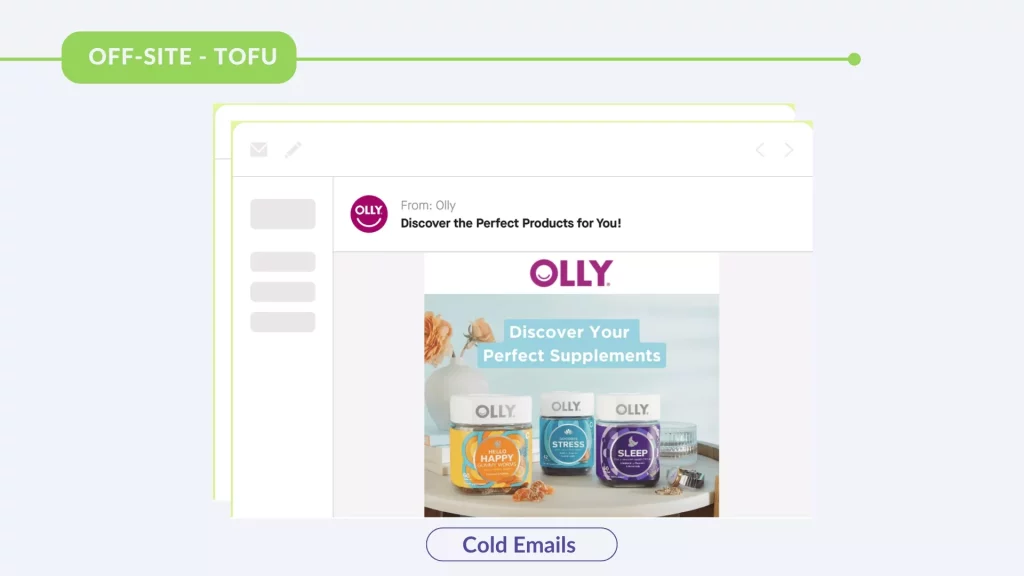
MOFU Content (Middle of Funnel): Develop content that builds consideration.

BOFU Content (Bottom of Funnel): Produce content that drives decisions.
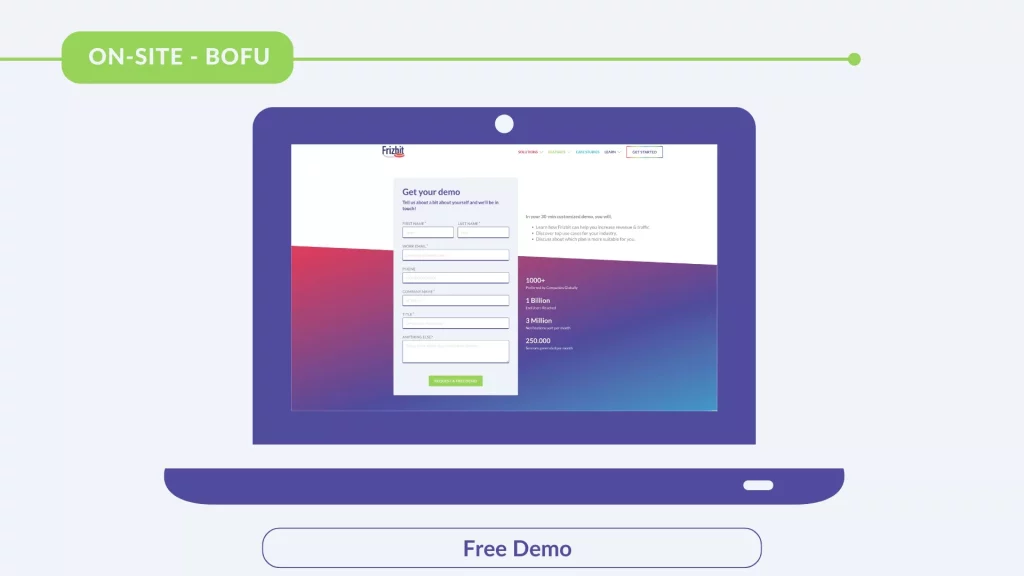
Recommendation: Use Keywords
Ensure all content is optimised for search engines to rank well and attract organic traffic. This involves using relevant keywords, meta descriptions, and ensuring your content is mobile-friendly and loads quickly.
Leverage Your Full-Funnel Marketing with Frizbit
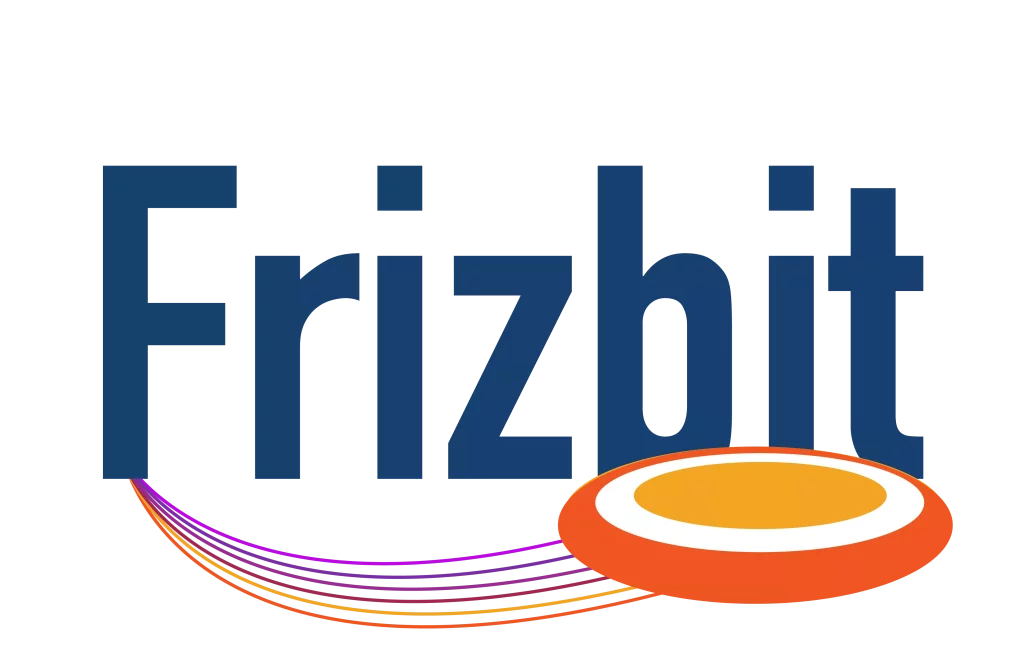
If you’re unsure where to start, consider exploring Frizibit, a cross-channel marketing automation platform designed to support e-commerce businesses. Frizibit helps bring customers back at every stage of the funnel by sending automated, hyper-personalized messages based on user behavior through web push notifications, email, and SMS channels.
Full-Funnel Marketing FAQ
What is the full-funnel measurement framework?
A full-funnel marketing measurement framework, with success metrics customized for each funnel stage and associated activities, provides marketers with a thorough insight into effective strategies. This data-driven approach enables better decision-making regarding their overall strategies and specific tactics.
What is a full-funnel approach?
A marketing funnel represents the stages consumers experience during their purchase journey, from initial awareness to long-term loyalty. This concept, which has been utilized for over a century, helps marketers clearly identify and categorize key milestones along the shopping process, including awareness, consideration, decision, and ultimately, loyalty.
What is a full-funnel strategy in B2B?
B2B businesses primarily choose a full-funnel approach to distinguish themselves from competitors. This strategy offers value to the target audience from the initial interaction and consistently nurtures them toward a sale by remaining highly beneficial throughout the process.
Why full-funnel marketing?
It’s crucial to address consumers at every stage of the marketing funnel, as their wants and needs can vary significantly. The top of the funnel includes those in the awareness stage, while the bottom encompasses those ready to make a purchase.
Do I need a marketing funnel?
Marketing funnels play a vital role in both lead generation and lead nurturing. During the awareness and consideration phases, brands launch campaigns to attract new leads. In the decision and loyalty phases, the focus shifts to nurturing existing leads and eventually transforming them into brand advocates.
Final Thougths
Implementing a full-funnel marketing strategy is crucial to address the unique needs of customers at each stage. A well-executed full-funnel approach not only nurtures leads effectively, but also optimizes marketing efforts to ensure a higher return on investment. Embracing this comprehensive strategy will help you transform initial interest into long-term loyalty and drive sustainable business growth.
